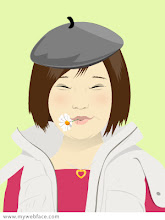 Don't you just want to leave winter behind
Don't you just want to leave winter behindand go loll under a nice palm tree on a sandy beach?
If you're like me and can't, the next best thing may be to surround yourself with some tropical flora.
I was lucky to be gifted these lush Philodendron bipinnatifidum leaves, roses and snapdragons from Mel. The lichen/moss-covered branches I foraged from the swampy woods of Virginia. The antique Japanese bamboo vase is a gift from my dad.
Now, all I need is a Mai-Tai and hammock!





